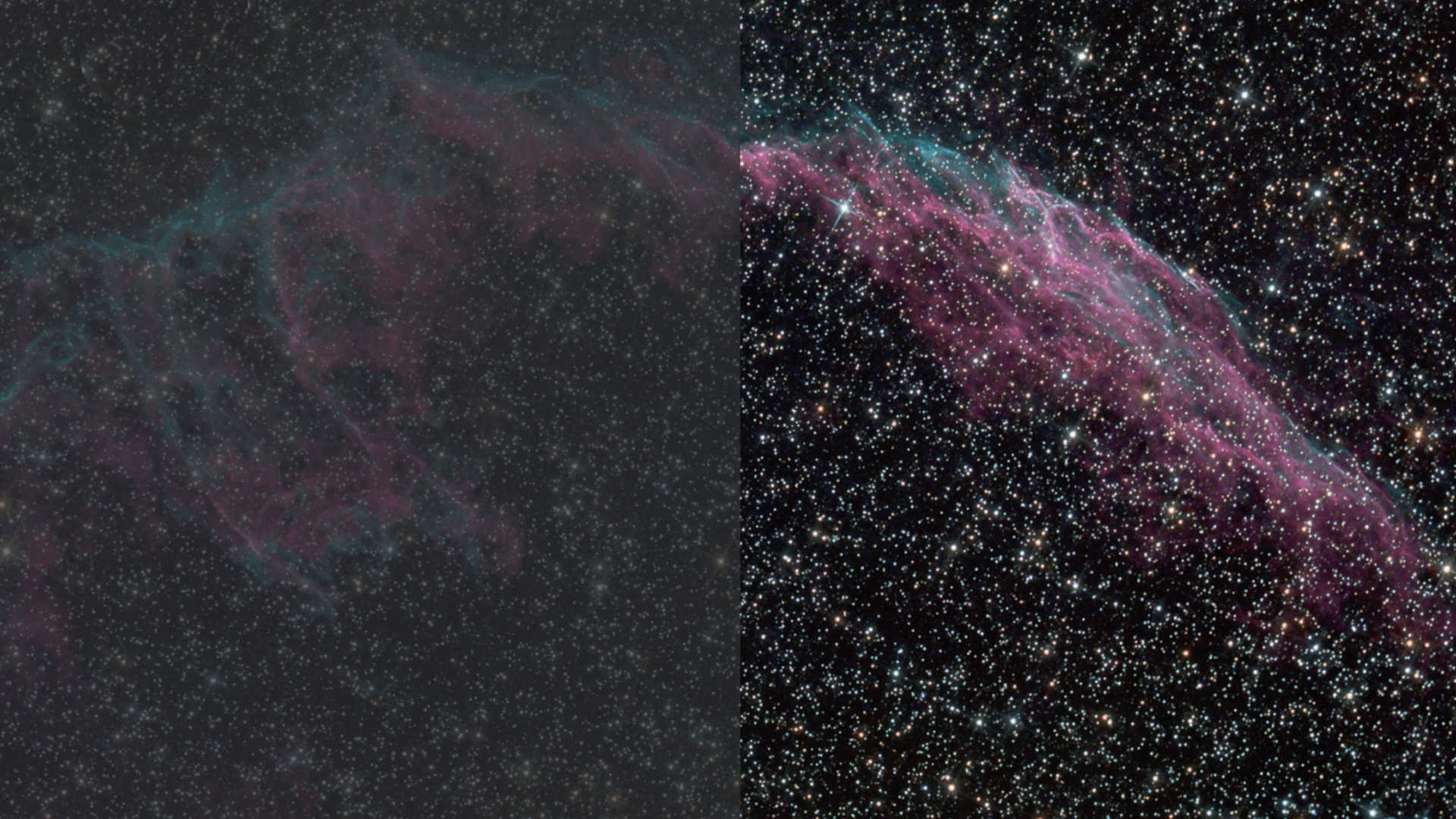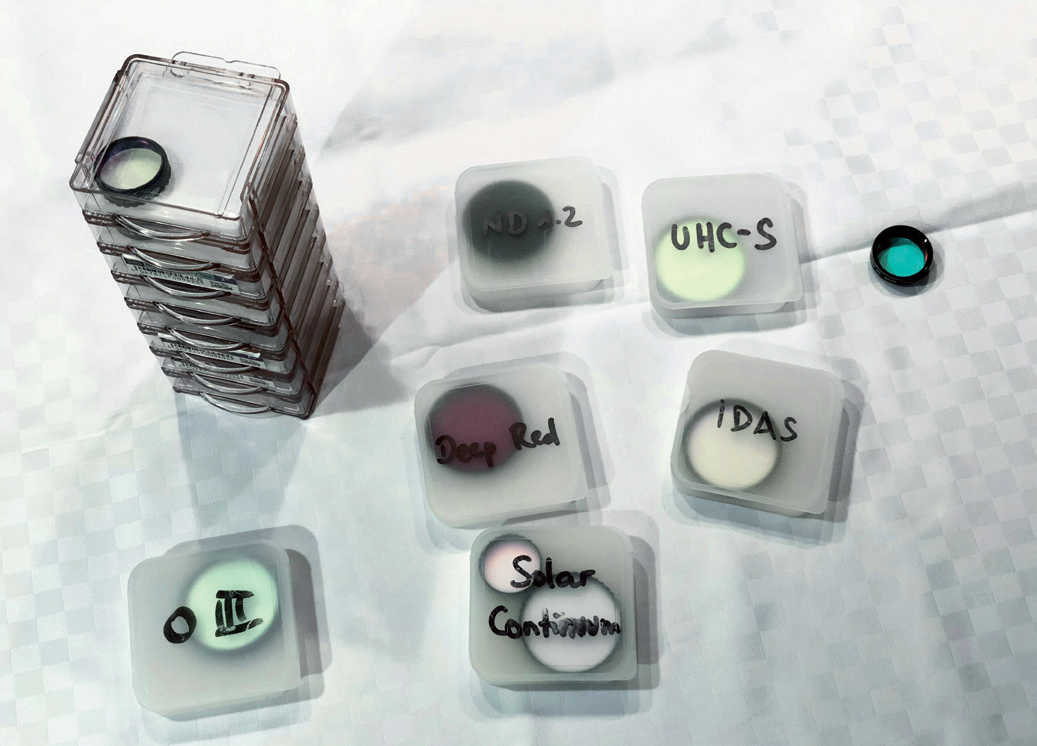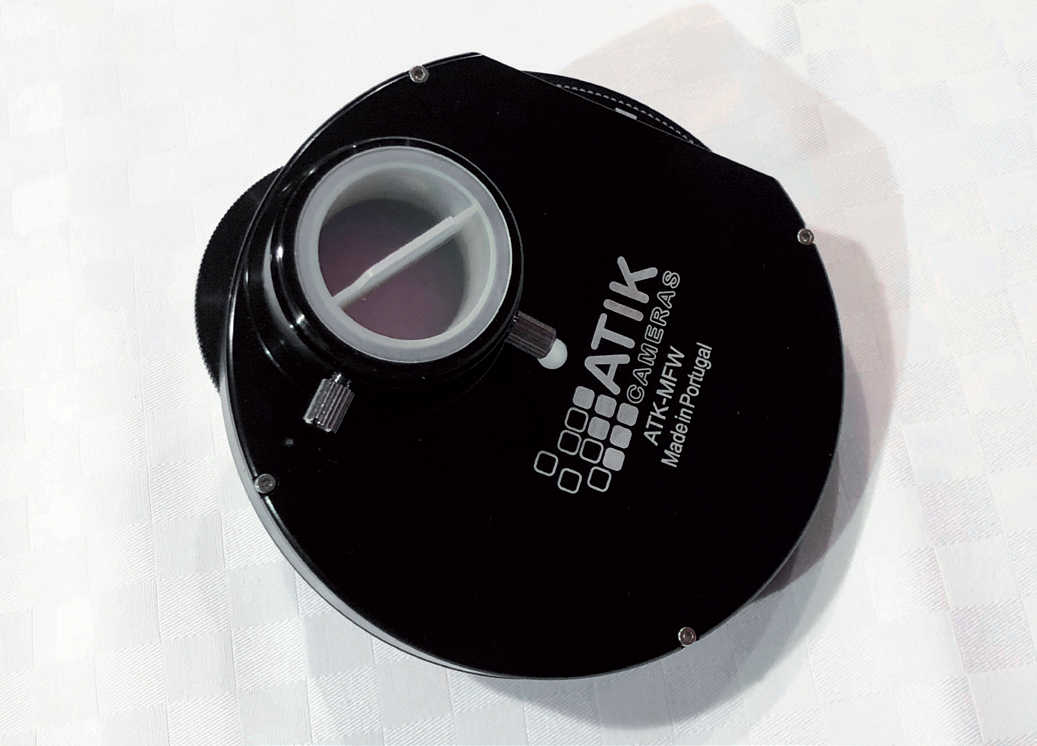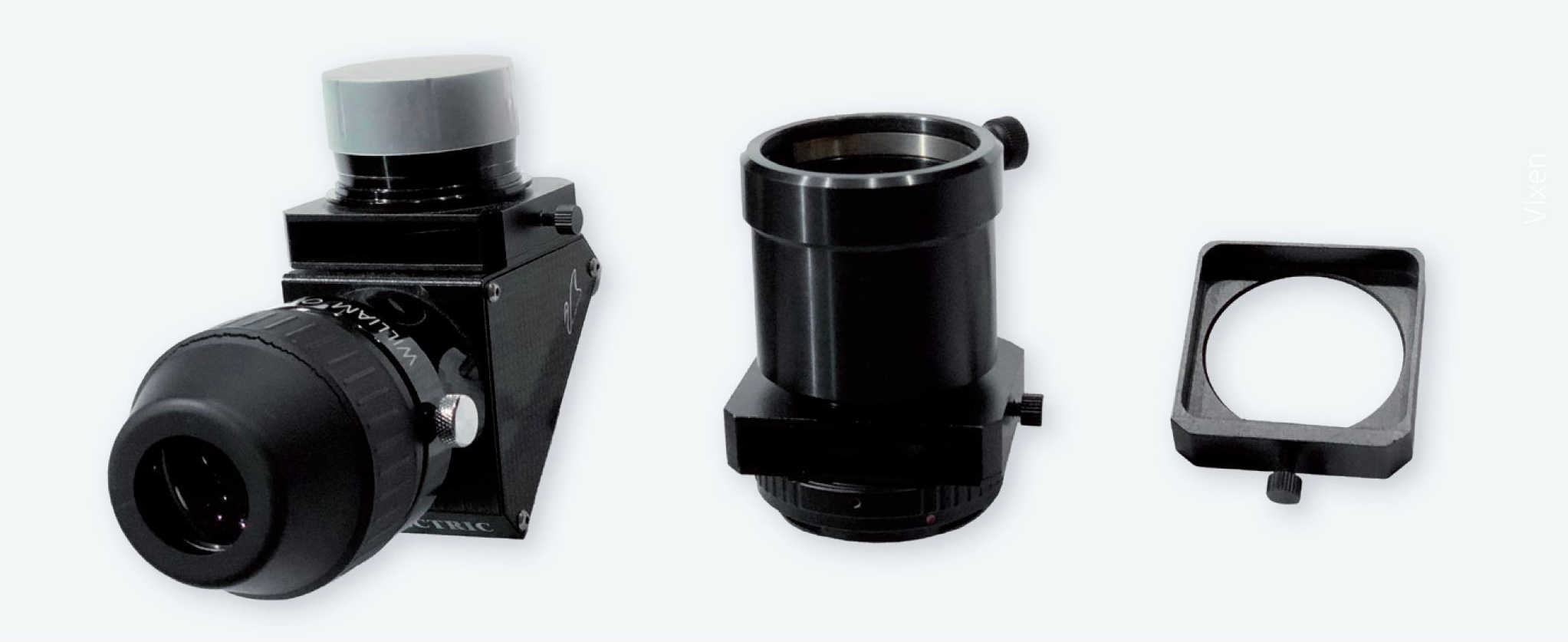Changing filters quickly
How to use different filters during an observation night with ease
Observing the Moon, planets, and deep sky all benefit from the use of filters. Now all we need to do is come up with an easier way of changing them.
 Filters can significantly improve the clarity of many celestial objects. P. Oden
Filters can significantly improve the clarity of many celestial objects. P. OdenObservations are often much better with a filter. Every amateur will find that they quickly accumulate a considerable number of filters over the years. There are some useful tools for quickly changing filters while observing.
Today, there are filters for lunar observation that reduce the amount of light transmitted, thereby providing a significant increase in contrast in cases where the image would otherwise be too bright. There are filters that, among other things, allow visible light of a particular spectrum to pass through. Here you will find yellow filters as well as red, green, and blue filters of different optical densities, which are especially useful for observing planets as they can enhance surface details. There are a variety of different filters that improve the visibility of deep sky objects even under a brighter city sky by specifically blocking the wavelengths of artificial city light (e.g. from mercury and sodium vapour lamps). There are filters that can only allow a certain part of the visible spectrum (red, green, or blue) to pass through, and others that only allow a very limited wavelength spectrum, dramatically improving the visibility of emission nebulae that emit light at exactly these wavelengths.
Complicated changes in the dark
 Over the years, we accumulate filter after filter. P. Oden
Over the years, we accumulate filter after filter. P. OdenUsing a filter is quite simple. Virtually every standard 1.25- or 2-inch eyepiece will have an internal thread on its barrel, and virtually every filter of the appropriate size has an external thread of exactly this size, so that it can be easily screwed into the eyepiece.
It only starts to get more difficult when you’re observing in the dark: you already have a UHC filter attached, and maybe you would like to replace it with an OIII filter in order to take a closer look at the Veil Nebula. You start to remove the eyepiece in the dark, unscrew the filter, put it down somewhere, put the eyepiece down, rummage around to find the new filter, prise it out of the filter box, look for the eyepiece again in the dark, try to screw the filter into the eyepiece, then you realise it’s cross-threaded and so it goes on… we all know these problems all too well.
Changing with a wheel…
 Filter wheel for five 1.25-inch filters. P. Oden
Filter wheel for five 1.25-inch filters. P. OdenEven if we have a large collection of filters, we are unlikely to use more than three to five of them over the course of an observation night, so it would be nice to have them to hand with some kind of rapid change solution. Fortunately, astronomy accessory retailers offer some useful and practical solutions here.
There are different solutions for visual observation, but in principle they all work in more or less the same way. On the one hand, there are filter wheels. These accessories generally allow five different filters at a time to be screwed onto a turntable. The turntable containing the filters is largely enclosed by a housing, so that the filters that are not in use do not attract dust. The filter wheel will have two openings into which adapters for the telescope side and the eyepiece side can be screwed, in order to bring the filters into the telescope’s optical path. On one side, the filter wheel will have a small hole which allows you to easily adjust the turntable to change the filter currently in use. This wheel is ribbed so that it can be operated easily even with gloves. The housing is sealed so that no stray light can enter. The individual filter positions are numbered on the turntable, so that you can quickly find the desired position even in the dark.
Inserting the filters (in advance in the light) takes just a few minutes, changing them in the dark then takes just a few seconds. One disadvantage of this solution is that the filter wheel adds to the length of your imaging train (80mm for a 2-inch version) and that a significant additional weight is added to the focuser (for a 2-inch version, this can be more than half a kilogramme). Filter wheels are even available with a software-driven motor for use with cameras for astrophotography, and allow you to remotely rotate the desired filter into the optical path for individual images.
…or with a drawer
A smaller and just as convenient solution are so-called filter drawers, which are also incorporated into the optical path. They are much more compact and weigh very little. You change the filter by changing filter drawers, into which the filters are firmly screwed, so that they cannot fall out while you are in the process of changing them.
Changing the filter is a bit more cumbersome than with the filter wheel, as the filter drawers still have to be changed in the dark, but it is nevertheless much easier than changing the filter manually by screwing the filter onto the eyepiece. There are 1.25" and 2" filter drawers, and they are even also available for unmounted filters. As with the filter wheel, the filter drawer enables you to change a filter in seconds, meaning that you can compare the clarity of an object with and without a filter very quickly and easily.
An additional advantage of both solutions is that the filter is significantly further away from the telescope's internal focal point than when it’s screwed in the eyepiece, so that any dust on the filter is virtually unnoticeable.
 Filter drawers attached to a zenith prism and a Canon EOS adapter (the thumb wheels are used to lock the drawer) as well as an actual filter drawer (here the thumb wheel serves as the drawer handle). P. Oden
Filter drawers attached to a zenith prism and a Canon EOS adapter (the thumb wheels are used to lock the drawer) as well as an actual filter drawer (here the thumb wheel serves as the drawer handle). P. OdenAuthor: Peter Oden / Licence: Oculum Verlag GmbH
